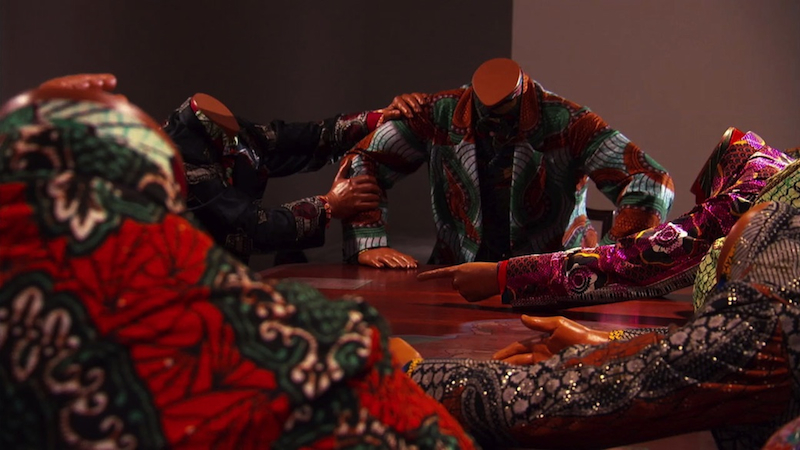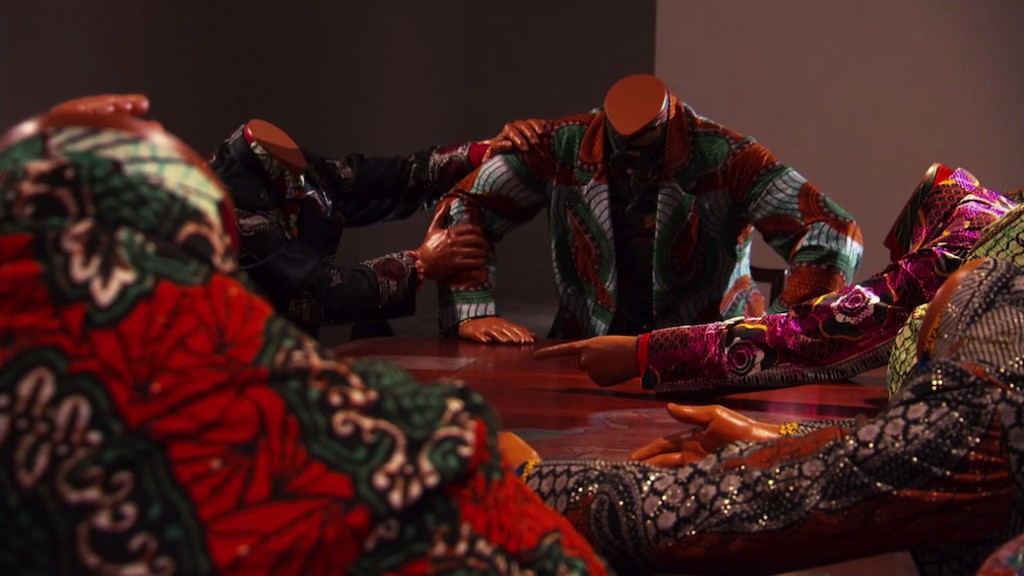
Yinka Shonibare MBE, Scramble for Africa, 2003; 14 life-size fiberglass mannequins, 14 chairs, table, and Dutch wax printed cotton; overall: 52 x 192 1/10 x 110 1/5 inches. Installation view, Yinka Shonibare MBE, Museum of Contemporary Art, Sydney, Australia, September 24, 2008–February 1, 2009. Commissioned by the Museum of African Art, Long Island City, New York. Collection of The Pinnell Collection, Dallas. Production still from the Art in the Twenty-First CenturySeason 5 episode, “Transformation,” 2009. Courtesy James Cohan Gallery, New York and Stephen Friedman Gallery, London © Art21, Inc.
In a new previously unpublished interview from 2008 Yinka Shonibare MBE talks about his collaborative process, his vision for an artist’s residency and community (now called Guest Projects), and the meaning of failure. An excerpt:
SHONIBARE: I feel that our society, our whole economy even, is underpinned by ideas. If there were no ideas, nothing would really function, so I think that having an experimental space where people can be free is important. Artists should have a space in which they can fail and the art market doesn’t really allow room for failure—there’s too much at stake. I want my house to be a space where artists can talk about things and make mistakes, where making mistakes doesn’t really matter, where people can develop ideas and it’s not dependent on whether they make anything to sell. It’s just a process.
ART21: What is failure in your terms?
SHONIBARE: Realistically speaking there is no such thing as failure. Whenever there’s some kind of destruction or disaster it inevitably leads to another thing. Failure is just as valuable as non-failure. If an artist was showing with a gallery and the gallery couldn’t sell any of the work, maybe that might be regarded as some kind of failure. But what I would like to do is to take art out of that cause and effect scenario and into something much more fundamental: thought and ideas.
Read the complete interview, “Yinka Shonibare MBE: Welcome Guests,” at Art21.org.
